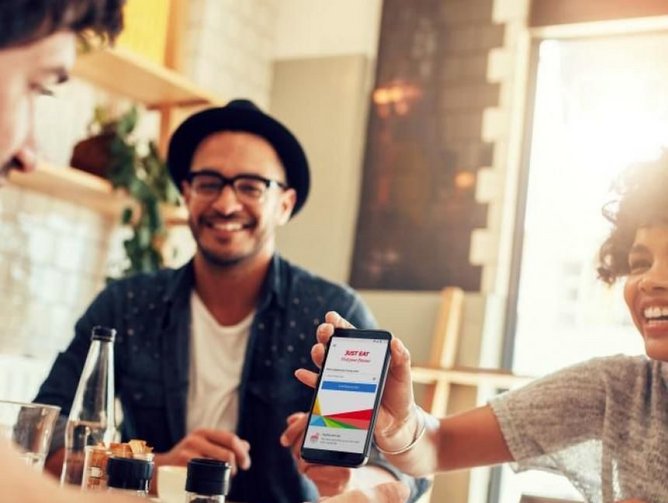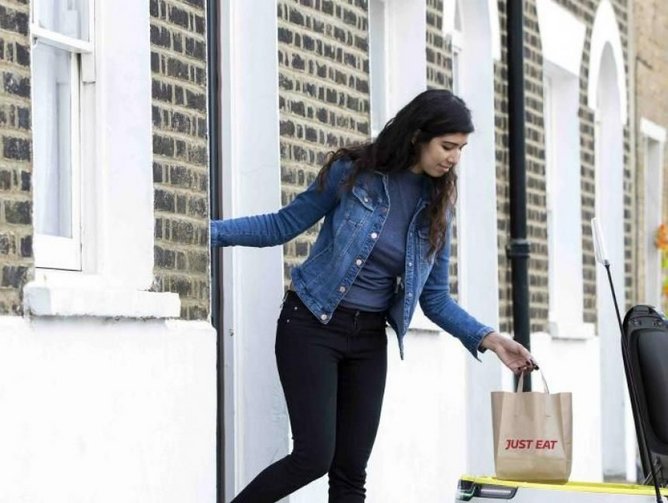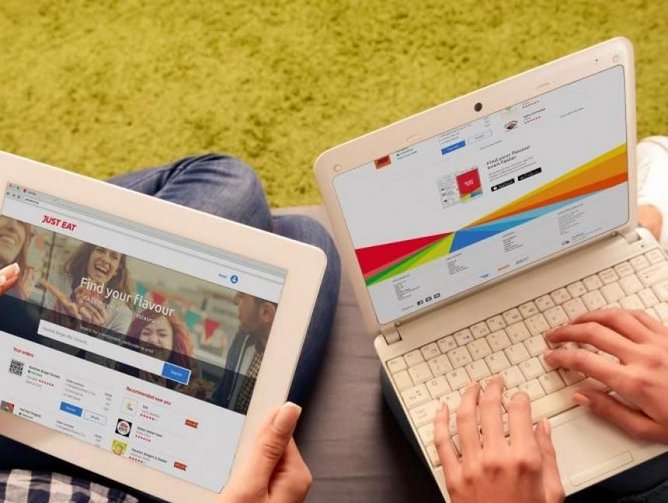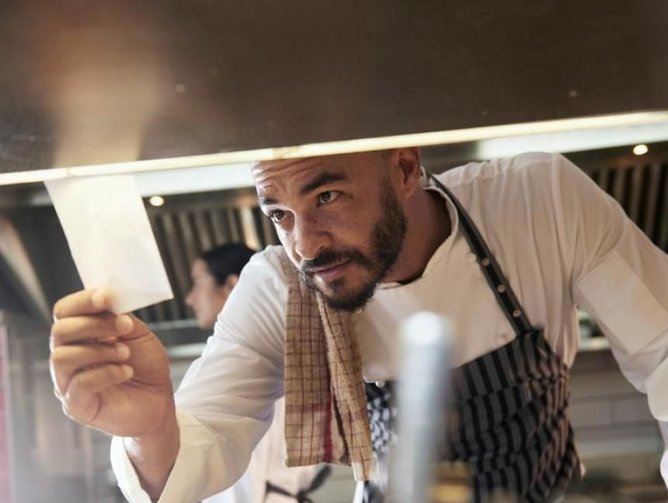Bringing connectivity and more power to the fingers of customers is the cornerstone of many modern markets, none more so than the food technology industry.
In the UK, six out of 10 takeaways are ordered over the phone. This is where Just Eat comes in. Just Eat is the world’s leading online and mobile takeaway ordering service. The company listed on the London stock exchange in 2014 and now operates in 12 markets across the world.
The UK subsidiary, Just Eat UK, was officially launched in 2006 and now offers over 27,000 restaurants to people across the country.
As of 2015, the company had 13.4m active users and processed 96.2m orders, generating a revenue of £247.6m. Needless to say, Just Eat is leading the way in online food delivery. But where can the company go from here? In June this year, the company announced an industry first group ordering experience on Apple TV as well as its first smart TV app which will launch initially with Amazon Fire TV.
Smarter ways to order
With smart technology such as mobile, tablet and now even smart TV apps becoming more and more the norm in the modern world, Fernando Fanton, Chief Product & Technology Officer at Just Eat admits that the company is always challenging itself to “push technology boundaries.”
“People are increasingly moving their lives online and that includes how they order food. They want wide choice, simplicity and increased convenience, and to be able to order from their own homes. Our technology has helped them do this,” he says.
“We see Just Eat being an integral part of the home of the future - a seamless part of your everyday routines and activities.”
As a Chief Product & Technology Officer, Fanton is responsible for all technology and product development worldwide. He admits that while innovation is hugely important, the customers remain at the heart of its developments and forward thinking.
“Customers increasingly expect services like Just Eat to be faster, smarter, and more intuitive,” Fanton adds. “Everything we do to make the process convenient, fun and reliable helps us rise to that expectation. We strive to bring great choice and continue to drive channel shift, from web to mobile and, more broadly, from phone to online.”
A side order of innovation
The partnership with Apple TV and Amazon Fire TV are part of an existing pledge to invest a substantial amount in marketing and technology within its UK market. This will allow the company’s R&D team to look further ahead and consider how technological developments will shape the growth of the business and the industry over the next few years and beyond.
One key aspect of this announcement is a new group ordering system. This will see customers able to add to a single order across multiple tablet devices, as opposed to passing a phone or a laptop between each person. The company has expanded on this with a partnership with Xbox, bringing group ordering into the gaming experience.
"It’s about ensuring JUST EAT delivers a frictionless experience to customers, wherever they are. Working with brands like Apple, Amazon and others, we want our technology to become a permanent feature in our customers' living rooms, as well as in our restaurant partners' offices and kitchens,” Fanton says.
Another example of Just Eat’s technology and product development, allowing the company to lead the wave of innovation in food tech and enhance the customer experience, is the partnership with Starship Technologies. Just Eat will test autonomous robots from Starship Technologies designed to assist with deliveries.
“Starship’s delivery robots are just the latest example of how we partner with other leading technology companies to enhance the services we offer, giving customers greater flexibility and reliability when ordering their food,” says Fanton. But it’s not just the customer who will benefit, Fanton stresses that restaurant partners will also see the benefit of the latest innovative trend.
“The robots will offer an important alternative for restaurants in some urban areas that see a considerable uptick of orders when there are fewer drivers available or when customer demand is particularly high, especially on Friday and Saturday nights,” he says.
“With autonomous robots helping with deliveries, the restaurants can supplement conventional driver deliveries, reach more clients and increase revenue at peak hours.”
The next time you click to complete your food order on Just-Eat don’t expect a robot to turn up on your doorstep just yet, as Fanton admits that right now testing and feedback is key to moving forward.
“At the moment this is a trial of a limited number of robots in certain postcodes. We will learn from this trial before proceeding further, but the trial demonstrates our commitment to using our scale and expertise to improve the takeaway experience for customers, help our partners, lead the market and grow the sector,” he says.
Next order of business…
Looking ahead, the company has plenty of developments under its belt such as NLP (natural language processing) which will allow the app to take feedback from customers and use it to create more effective search engine, tailored to the customer’s specific needs – all in real time.
“At Just Eat, we feel we’ve just scratched the surface of what is possible in this space and we are committed to championing innovation in the sector. The opportunities are endless and we’ll focus relentlessly on advancing technology to make sure our customers and restaurant partners have a delightful experience,” says Fanton.
To ensure a rich customer experience and retaining those customers, Just Eat maintains strong relationships with its restaurant partners.
“We have over 62,000 restaurant partners worldwide - so we invest a lot in making those relationships work,” Fanton adds.
Consumers of data
One way that Just Eat works with these restaurant partners is through its use of data. Just Eat has over 400 billion records of customer data and it is able to improve the service for its customers by analysing which restaurants are more likely to be of interest based on their behaviour. This allows more personalised recommendations.
Extending that further to restaurants, Just Eat shows them how they compare to other restaurants in that area and look in further detail at the more popular dishes within that locality.
With this volume of data comes the issue of cyber security and Just Eat strives to make every effort to provide a secure and trusted platform for its customers.
“We do not store customer credit card details anywhere on our systems,” Fanton explains. “We use trusted third party providers to execute customer purchases. Just Eat does not hold customers’ funds and does not take money from customers’ accounts.”
Tomorrow’s menu
For Just Eat, the only way can be up. Fanton admits that the company has its competitors but as a business, the motivation and focus is purely on improving the customer experience and adding value to restaurant partners. These are key to the future success of the company.
“Our strategy is to be number one in all the markets we operate in and this is the case in all 12 of our markets globally. We continue to focus on ourselves and our customers and on growing and developing our own business. Of course, continuous improvement is crucial - we certainly don’t stand still - and it is part of my role to galvanise our technology and product teams to focus on that,” he says.
With the statistics showing an increased number of food orders made via mobile phone, Fanton sees that as an opportunity that Just Eat can tap into.
He concludes: “There is still a huge opportunity for us to encourage people to order online or via the app. When you look at some other markets like southern Europe or Latin America, almost nine out of 10 orders are still made by phone.
“The overall size of the takeaway delivery market in countries where we already operate is a massive £22.9bn, so there is still lots to play for.”








